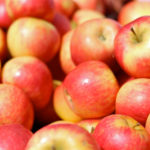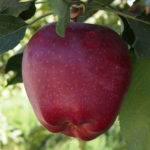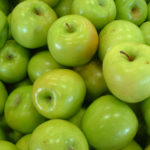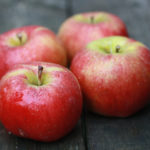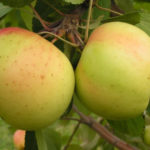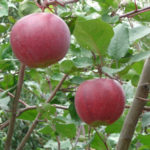Pear variety Elena
Half a century is a period for a fruit crop, seemingly for children, but during this time the plant is able to show its strengths and earn the respect of gardeners. In 1960, at the Scientific Research Institute of Viticulture, Winemaking and Fruit Growing in Armenia, the breeder P.G. Karatyan created a new pear, cross-pollinating Forest beauty and Bere winter Michurin. The variety was named Elena (it is also known under a different name - Gekhine). The novelty very soon took root in summer cottages in the Central Black Earth region of Russia, as well as in the southern regions and in the Moscow region.
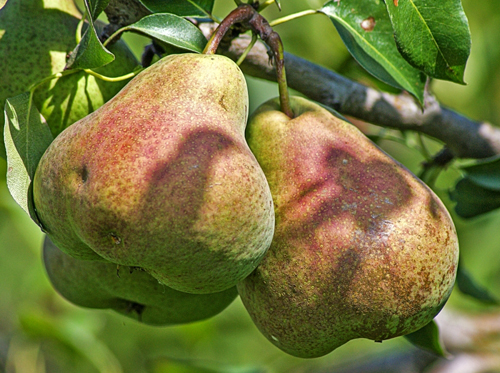
Description
At a young age, the pear shows active growth, but it slows down by the fruiting period. As a result, the site will be decorated with a low beautiful tree about 3 meters high, sometimes a little higher. The crown is compact, not dense, pyramidal in shape, medium-leafy.
The fruit has an attractive appearance due to its rounded pear-shape. The color is dim, the main color of the pear is green, with the onset of full maturity, the shade changes to yellow-green or warm yellow. The cover color is insignificant, it appears from the sunny side in the form of a blurry dull blush. The subcutaneous points of the variety are small, gray in color. There are also small rusty specks scattered over the surface. The peduncle is strong, thick, short, and has a slight bend. The flesh of Elena's fruits is rather dense, semi-oily, juicy, melting in the mouth, fine-grained, white. The taste is sweet and sour, with a slight astringency, the aroma is delicate, pleasant. Taste qualities are rated very high - 4.6 - 4.8 points. Fruit sizes are from medium to large, weight is from 140 to 220 grams. The pulp contains vitamins, pectins, tannins and biologically active substances.
Characteristics
- Elena enters the fruiting period 5-7 years after planting the seedling in a permanent place;
- for a long period of waiting for the beginning of fruiting, the variety generously endows with an annual bountiful harvest - up to 40 kg of excellent fruits are harvested from a low tree. Even in the most unfavorable years, the yield indicator is from 30 to 35 kg. In commercial gardens - 200 c / ha;
- ripening of this winter variety occurs in late September or early October, depending on the region;
- the tree blooms at a later date, so the flowers do not suffer from recurrent frosts;
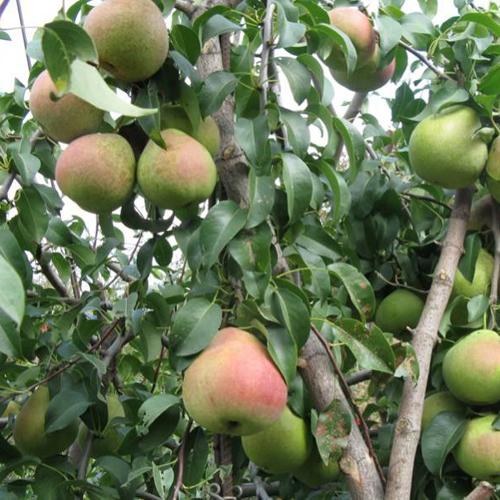
- harvesting should not be delayed, it is necessary to harvest the crop in 7 - 10 days, otherwise overripe fruits will fall off;
- pear immunity is quite good, its resistance to various fungal diseases, such as scab and septoria, is especially appreciated. But in some years, without preventive treatments, Elena may suffer from various rot, powdery mildew and rust;
- in the recommended growing regions, there is good frost resistance in adult plants;
- drought resistance of the variety is insufficient;
- the tree is self-fertile, therefore it is capable of setting a crop without cross-pollination;
- transportability and keeping quality of pears are good. But this only applies to fruits that were picked on time. Overripe fruits will not last long;
- the way of eating fruits is universal. Fruit in its natural form is a valuable supplier of useful micro- and macroelements. In winter, you can make jam, jam, pie filling, compote from the surplus harvest.
Planting and leaving
For planting, it is advisable to choose one or two year old seedlings. In order for the tree to have a compact size, the variety is grafted onto a low-growing stock. Planting season is spring or autumn. Closed-root plants can be planted in summer.
Watering Elena likes good, but not excessive.It is especially important during the formation of the ovary and fruit filling. Pre-winter watering is also necessary, which helps to increase the winter hardiness of the plant. But it is carried out only if there is no natural precipitation in the fall. Sprinkler moistening is very suitable for pears.
If during planting all the necessary nutrients were introduced, then they begin to fully fertilize the tree only for 3-4 years of cultivation. For top dressing in the spring, nitrogen-containing fertilizers are used, in preparation for winter - phosphorus-potassium fertilizers. In the summer, foliar feeding can be carried out if necessary, if the leaves signal a lack of any trace element. Pruning after the formation period is carried out as needed. In the spring - thinning, sanitary - at any time when it is necessary.
Elena is a great culture for a small garden in Central Russia. Good yield, high immunity and unpretentiousness of pears have won respect from gardeners. After all, a reliable variety with excellent taste is always in the price.
